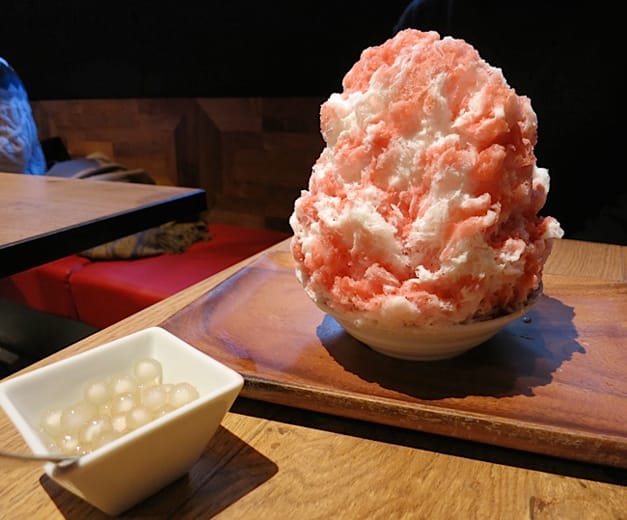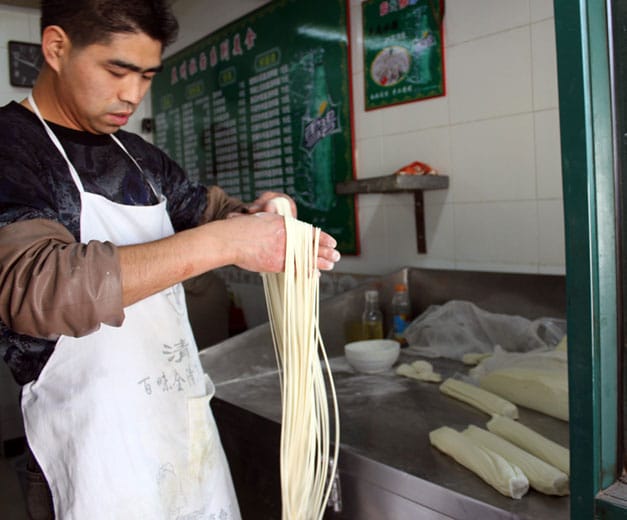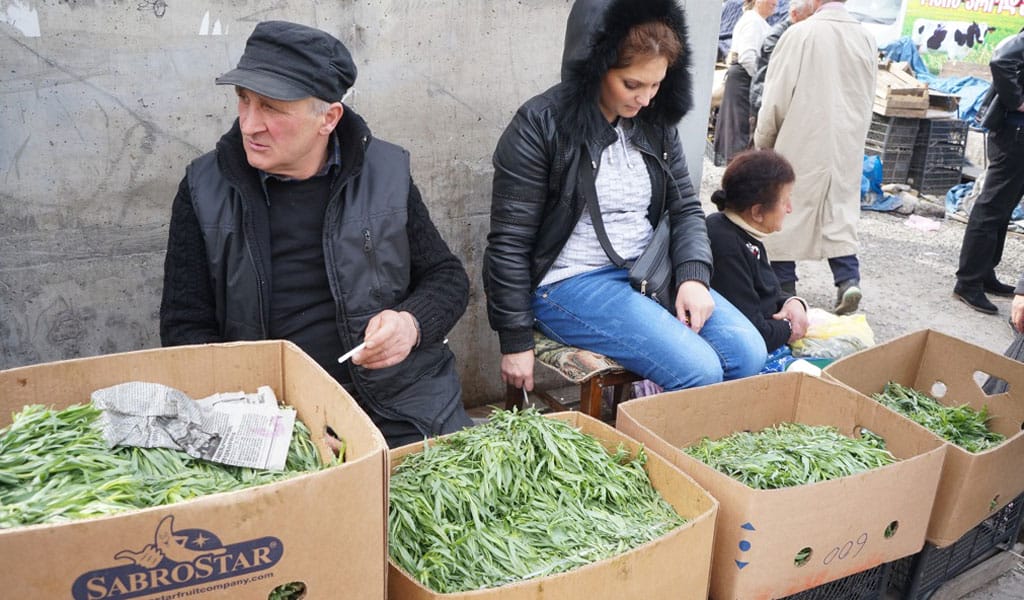It’s the end of an era for Tokyo’s Tsukiji Market. Saturday, October 6, will be the last day of operation for the world’s largest fish market, after which it will relocate two kilometers east to a new site on the manmade island of Toyosu. The move has been in the works for years (it was first announced way back in 2001), but with 2020 Olympic deadlines looming (the vacant site was a promised piece of infrastructure in the capital city’s bid to host), “Tokyo’s Kitchen” will be closing an 83-year chapter.
As Tsukiji’s main wholesale marketplace is one of Tokyo’s few extant pre-World War II structures, darn near anyone you ask is sad to see it go. Tsukiji has a sense of place stronger than anywhere else in Tokyo, but ironically, the inner market has accumulated all of its site-specific charm in direct proportion to its decay.
Tsukiji’s story runs parallel to Tokyo’s growth from a small fishing village of just 3,000 people at the turn of the 17th century to one of the largest cities the world has even known. When then-Edo became the de facto capital in 1603, the central castle and the city surrounding it required a central market. This was established at Nihonbashi (literally “Japan Bridge”) on the east side of Edo Castle. At the time, the city was webbed with a network of moats and canals to both move goods around the capital and protect its heart from attack. Nihonbashi was not one bridge but many, with assorted goods – including all manner of seafood – sold on designated spans so boats could easily load and unload.
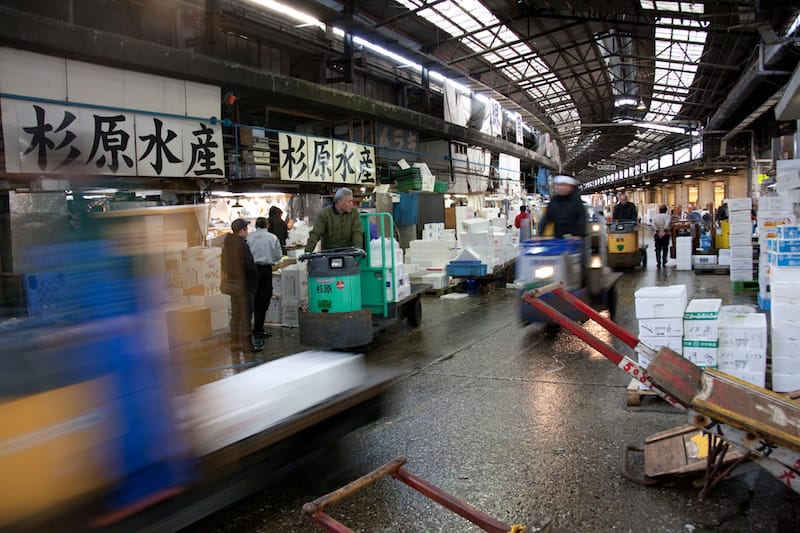
The market’s entrenched position, both literally and figuratively, took on more importance as Tokyo and the wider country flourished in the ensuing centuries. (To this day, all mile markers proclaiming the distance to Tokyo on every highway and toll road across Japan measure the distance to Nihonbashi.) The earth dug up to create Edo’s network of canals and moats was used to reclaim land from the flat waters of Tokyo Bay, then known as Uchi-umi, the inner sea. Tsukiji is a square island of such reclaimed land.
In 1868, when the last shogunate ceded rule to the imperial family for the first time in nearly nine centuries, the market at Nihonbashi remained. Foreign embassies and the Edo Hotel, the first hotel for foreigners in newly minted Tokyo, were placed on Tsukiji where the limited canal bridges made it easy to monitor comings and goings. Control over Japan’s foreign population was greatly loosened in 1899, but Tsukiji remained the city’s principle foreign enclave.
Then, two minutes to noon on September 1, 1923, disaster struck. An earthquake registering 7.8 on the Richter scale blindsided the capital. Much of Tokyo’s timber construction was reduced to kindling. Lunchtime cook fires set the city ablaze. Conservative estimates put the number of dead over 100,000. The Nihonbashi market was completely destroyed, as were the embassies and Edo Hotel on Tsukiji. Lacking a marketplace, Tokyo’s fishmongers squatted for two months in the rubble of Shibaura, just south of Tsukiji, before eventually settling onto that destined square of reclaimed land.
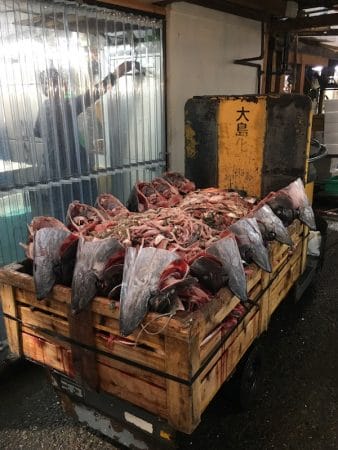 It would be another 12 years before the wholesalers there got a proper market. In 1935, a team of Japanese architects returned from their mission to study the marketplaces of Munich and Frankfurt and erected the current Tsukiji inner market. The hulking, open-air building is a mixture of the International and Bauhaus schools, a steel skeleton putting function only nominally ahead of form. It’s been patched over countless times over eight decades of near constant habitation, but muted glimmers of its bygone glory can be glimpsed in a sunlit truss or cobblestone slick with drain water. Viewed from above, the main structure of the inner market arcs to accommodate the railway and accompanying train cars that, until the advent of refrigerated trucking in the 1960s, carried everything from king crab to conger eels in and out of the market. Now bays of blue-roofed loading docks occupy the inside of the arc.
It would be another 12 years before the wholesalers there got a proper market. In 1935, a team of Japanese architects returned from their mission to study the marketplaces of Munich and Frankfurt and erected the current Tsukiji inner market. The hulking, open-air building is a mixture of the International and Bauhaus schools, a steel skeleton putting function only nominally ahead of form. It’s been patched over countless times over eight decades of near constant habitation, but muted glimmers of its bygone glory can be glimpsed in a sunlit truss or cobblestone slick with drain water. Viewed from above, the main structure of the inner market arcs to accommodate the railway and accompanying train cars that, until the advent of refrigerated trucking in the 1960s, carried everything from king crab to conger eels in and out of the market. Now bays of blue-roofed loading docks occupy the inside of the arc.
Searching for remnants of stray railroad ties sounds appealing, but of course there aren’t any left. Tsukiji is stocked, emptied, and swept of all non-essentials and assorted riff-raff with a precision that Swiss watchmakers would envy. (A perhaps necessary exactitude due to the market’s immense size – every year over 4,000 species of fish and seafood, amounting to 700,000 metric tons and over 5.9 billions USD, pass through Tsukiji.)
As a visitor, a morning stroll through the inner market demands swivel-headed attention to speeding pallet trucks and a skin thick to the glares and curt dismissals from wholesalers who lost their patience for curious interlopers a generation ago.
Change may be inevitable, but growing pains are always hard to bear.
Meandering through the 1,677 stalls along the path of least resistance is a learned art, and one that reveals snapshots that feel stolen from a movie set. Fishmongers pinch cigarettes between rubber-gloved fingers. Impossibly long maguro bōchō, specially made knives for carving up whole tuna, lay across cutting boards as big as tatami mats. Crates of giant tuna heads, gaping in dead-eyed surprise, litter the floor like forgotten props. The soundscape is a mixture of shouts, the clatter of ice and a general industrial din that you somehow don’t notice until you need to speak and realize that yes, you, too must shout to be heard.
Tsukiji is divided into two clear zones, the outer and inner markets. While the outer market and its sundry retail-facing shops and restaurants will remain, the inner wholesale market will move. With it will go the world-famous tuna auction, the 1,677 stalls and the Uogashi Yokocho shopping streets on the inner market’s outer edges. The shops and restaurants here originally catered only to market workers, but as Tsukij’s popularity as a tourist destination has grown over the years, many have become top spots for international gourmands. Chief among them are reverentially regarded Sushi Dai, Daiwa Sushi and Sushibun. Tokyo waits with bated breath to see how they fare in the transition to Toyosu.
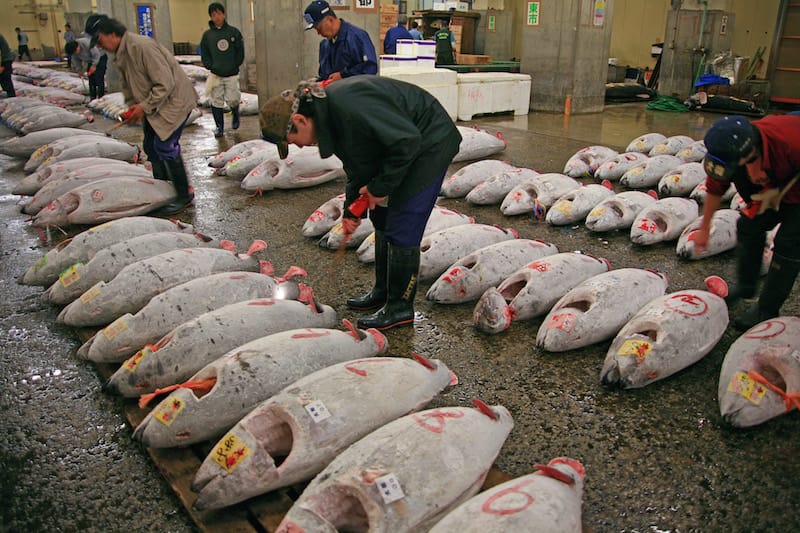
In addition to these lauded sushi shops, a number of other, non-seafood, restaurants serving market workers tired of handling fish all day will also be closing long chapters. For example, the original shop front for Yoshinoya, a beef bowl purveyor that opened at the former Nihonbashi market in 1899 before becoming an international chain with over 1,200 locations, will also close.
Early reports from the new Toyosu site are tarnished by a word appreciated by health inspectors but much derided by epicurean adventurers: sterile. Granted, it will need some breaking in, but at least the new facilities promise more tourist-friendly tuna auctions observable from designated viewing rooms, a rooftop lawn for picnicking and city views, and areas for retail shops and restaurants.
Over time, the old outer market and new Toyosu site will diverge into distinct entities, one a ghost of an earlier era, the other a bustling market making new stories for future generations of foodies and seafood lovers. It is hard to capture in words the significance that Tsukiji has had on the culinary world, and its move is sure to be felt in Tokyo and far beyond. Change may be inevitable, but growing pains are always hard to bear.
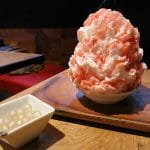 February 27, 2015 Yelo
February 27, 2015 Yelo
Why eat kakigori in the middle of winter? At Yelo, the smash-hit shaved ice café in […] Posted in Tokyo July 27, 2015 Sleight of Hand
July 27, 2015 Sleight of Hand
Wandering around Shanghai’s quieter streets, you may often hear a thump thump thwack! […] Posted in Shanghai April 26, 2023 Spring in Tbilisi
April 26, 2023 Spring in Tbilisi
At the cusp of winter’s end, men across Georgia balance on wobbly ladders and trim their […] Posted in Tbilisi
Published on October 05, 2018
Related stories
February 27, 2015
TokyoWhy eat kakigori in the middle of winter? At Yelo, the smash-hit shaved ice café in Roppongi, it’s merely because one can. During warmer months an outrageous line snakes out the somewhat hidden doorway along the outside of the restaurant, winding down a street housing an artisanal-beer darts bar and a club featuring a Beatles…
July 27, 2015
ShanghaiWandering around Shanghai’s quieter streets, you may often hear a thump thump thwack! ringing out from a streetside café. If you’re lucky, it means someone is pulling noodles fresh to order, and if you’re even luckier, you’ll happen to be hungry enough to enjoy a bowl. One of the best things to do for a…
The market stalls are overflowing with spring bounty; join our tour and check it out.
April 26, 2023
TbilisiAt the cusp of winter’s end, men across Georgia balance on wobbly ladders and trim their grapevines. The clippings will be used later for baking bread in traditional tone ovens and for roasting mtsvadi, skewered chunks of pork, on the embers. Only after the trimming is completed throughout the land is springtime allowed to arrive.…














































